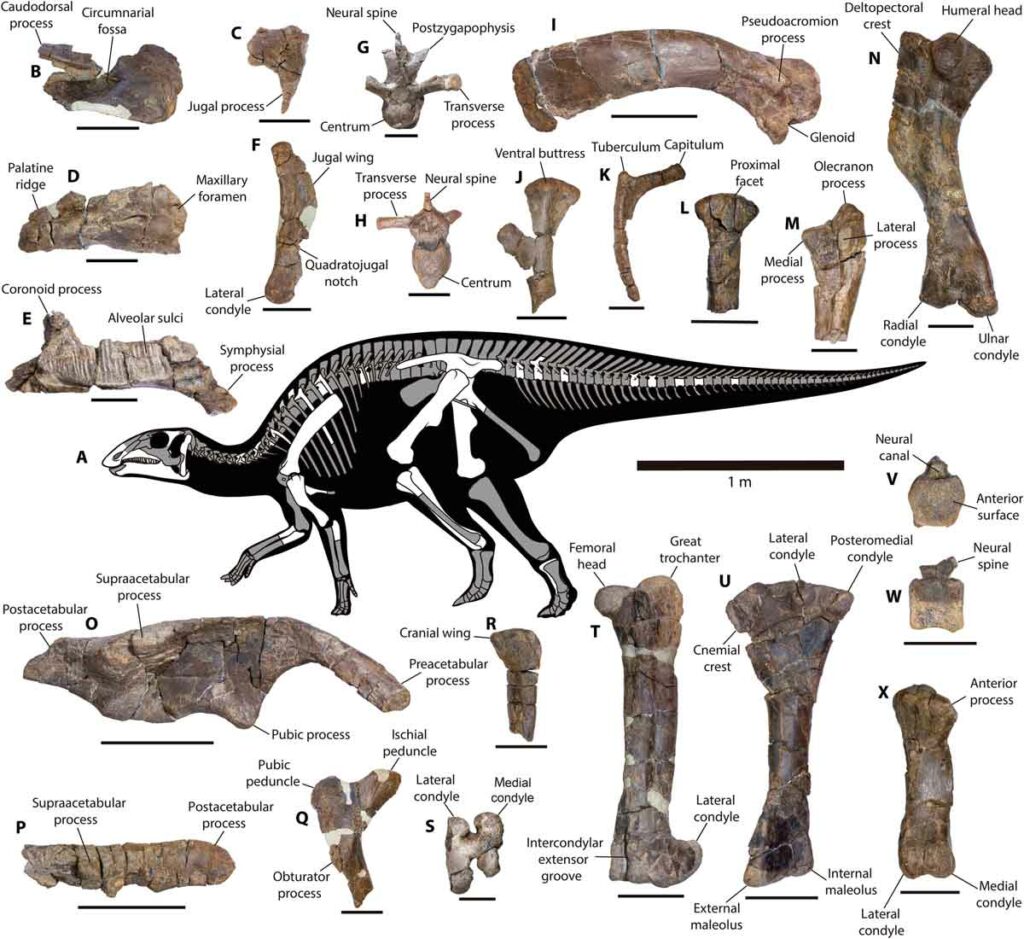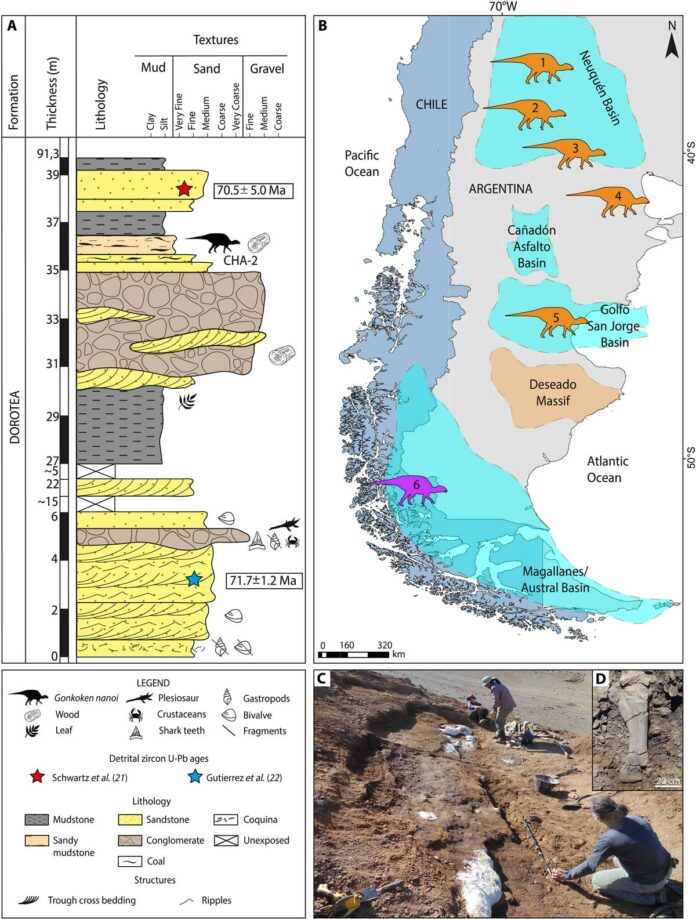In a groundbreaking find, scientists in Chile have unearthed the remains of a previously unknown species of herbivorous dinosaur, challenging long-held beliefs about the distribution of duck-billed dinosaurs.
The discovery of the dinosaur, named Gonkoken nanoi, is significant as it is the first of its kind found in the southern hemisphere.
The findings, published in the esteemed journal Science Advances and presented in Santiago, have shed new light on the ancient ecosystems of Chilean Patagonia.
Gonkoken nanoi, which lived approximately 72 million years ago during the Late Cretaceous period, was an extraordinary creature.
Measuring up to four meters in length and weighing around a ton, this slender dinosaur possessed the ability to adopt both bipedal and quadrupedal postures.
These adaptations enabled it to reach vegetation at various heights, both on the ground and higher up in trees.
The discovery of this unique locomotor ability has captivated the scientific community.
Alexander Vargas, director of the paleontological network of the University of Chile and one of the study’s authors, expressed his excitement about the find.
Alexander Vargas said, "These were slender-looking dinosaurs, which could easily adopt a bipedal and quadrupedal posture to reach the vegetation at height and at ground level."
This newfound knowledge challenges the conventional perception of duck-billed dinosaurs, expanding our understanding of their ecological diversity and adaptive behaviors.
The presence of hadrosaurs, a type of duck-billed dinosaur, in Chilean Patagonia has surprised researchers.
Previously known to inhabit North America, Asia, and Europe during the Cretaceous period, their existence in the remote southern lands raises intriguing questions.
Vargas emphasized the need to comprehend how their ancestors arrived in Chilean Patagonia, a region geographically distant from their known habitats.
The discovery of Gonkoken nanoi was the result of a decade-long investigation that began in 2013.
The name of the newly found species holds significance as it is derived from the Tehuelche language, spoken by the region’s first inhabitants.
Gonkoken translates to “similar to a wild duck or a swan.” This choice of name pays tribute to the creature’s likely resemblance to these avian species.
The unearthing of this dinosaur fossil is a testament to the importance of paleontological research in Chilean Patagonia.
The region has now become recognized as a refuge for ancient species of hadrosaurs, expanding the known range of these remarkable dinosaurs.
As scientists continue to analyze the remains and unravel the secrets they hold, the discovery of Gonkoken nanoi promises to provide invaluable insights into the evolutionary history of dinosaurs and their remarkable adaptations.

Unveiling the Enigmatic Migration of Duck-Billed Dinosaurs
Chilean Patagonia, a land of breathtaking landscapes and diverse ecosystems, has revealed yet another surprise to the scientific community.
The recent discovery of the herbivorous dinosaur, Gonkoken nanoi, challenges conventional beliefs about the distribution of duck-billed dinosaurs.
While these dinosaurs were known to inhabit North America, Asia, and Europe during the Cretaceous period, the finding of their remains in the southern hemisphere raises intriguing questions about their migration patterns and the unique habitats they once occupied.
The research team, led by Alexander Vargas from the University of Chile, embarked on a decade-long investigation following the initial discovery of the dinosaur in 2013.
Their findings, recently published in Science Advances, provide invaluable insights
FAQ
The discovery of Gonkoken nanoi is highly significant as it challenges long-held beliefs about the range of duck-billed dinosaurs. This previously unknown species, found in Chilean Patagonia, provides new insights into the distribution and adaptability of these ancient creatures.
Gonkoken nanoi lived approximately 72 million years ago during the Late Cretaceous period. Its discovery sheds light on the diverse ecosystems that existed in Chilean Patagonia during that time.
Gonkoken nanoi measured up to four meters (13 feet) in length and weighed around a ton. Its slender build and unique locomotor abilities allowed it to reach vegetation at different heights.
Duck-billed dinosaurs, or hadrosaurs, were previously known to inhabit regions such as North America, Asia, and Europe. The presence of these dinosaurs in remote southern lands raises questions about their migration and how their ancestors arrived in Chilean Patagonia.
The name “Gonkoken” comes from the Tehuelche language, spoken by the region’s first inhabitants. It translates to “similar to a wild duck or a swan,” highlighting the perceived resemblance of this dinosaur to these avian species.
The discovery of Gonkoken nanoi suggests that Chilean Patagonia served as a refuge for ancient species of hadrosaurs. This finding expands our understanding of the diversity of dinosaur species in the region and provides insights into the ecological dynamics of that time.
The investigation into the discovery of Gonkoken nanoi spanned a decade, beginning in 2013. The dedicated efforts of the research team led to the detailed understanding we have today about this previously unknown dinosaur species.
Yes, further research is expected to be conducted on Gonkoken nanoi and the ecosystem it inhabited. Scientists will continue to analyze the fossil remains, hoping to uncover additional information about the species, its behavior, and its interactions with other organisms in the ancient environment.
More information: Science Advances (2023). DOI: 10.1126/sciadv.adg2456

